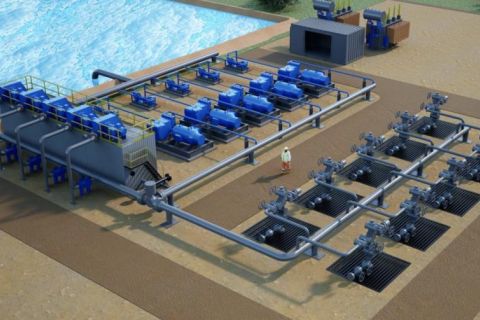More than once I’ve had someone chat me up about midstream investing at a social gathering and the whispered question,“What’s a really good MLP to buy?” comes along.
Note: I do not give stock tips. Above and beyond all ethics-of-journalism questions, a check of my IRA’s results might give anyone pause about the reliability of my investment opinions.
My reply is there are a lot of good MLPs out there. It would be best to research several and pick one according to your forecast on what the market will do.
But the world of MLPs is not a monolith. Increasingly, each varies in its prospects. What do you seek and what do you think the future holds? There are so many MLPs out there today, some three dozen IPOs just in the past two years, that investors can get right choosy.
A recent Wells Fargo Securities research report looks at where MLPs earn their keep. A useful table breaks out the portion of partnerships’ EBITDA, gross margin, operating margin or revenue exposure by commodities handled—just a handful of many variables. This does not equate to commodity price swings, Wells Fargo points out, but rather exposure to future business opportunities. Fixed-price contracts dampen commodity price swings.
Even within one midstream MLP category—large-cap pipelines—the business profile varies considerably. For example, Wells Fargo estimates that in the case of Enbridge Energy Partners LP, 92% of its EBITDA exposure is from moving crude oil, 4% natural gas and 4% NGL. Meanwhile, Williams Partners LP’s EBITDA breaks out as 52% gas, 25% NGLs and 22% other products.
Investors throw both partnerships in the large-cap pipe bucket, but their businesses, strategies and prospects differ substantially. That’s how things differ in just one of several categories of midstream partnerships—much less MLPs active upstream, downstream or in, say, coal.
“The importance of owning an MLP in the right sector has increased,” the Wells Fargo report emphasizes.
Overall, Wells Fargo sees a bright future for MLPs this year despite so-so results at the start of 2014—impacted greatly by the distribution cut announced in February by Boardwalk Pipeline Partners LP.
“We continue to favor high-growth, fee-based MLPs (including general partners) but are beginning to gravitate to some higher yielding, moderate growth names that screen as relative values,” the report adds.
Cohen & Steers seems to agree. The investment management firm focuses on real estate, infrastructure and commodities investments and started a second MLP-focused mutual fund early this year.
In a recent investor report, the firm noted that midstream business models “are characterized by predictable revenue streams and cash flows. The delivery of this income can be enhanced through the tax-efficient structures of MLPs … Regardless of the structure, we believe these infrastructure companies lie in the ‘sweet spot’ of shifting trends in supply and demand, as new areas of North American production are developed and the drivers of rising global consumption evolve.”
Opinions make a market. There will be lots of opinions expressed at the National Association of Publicly Traded Partnerships’ annual investor conference, set for this month at Ponte Vedra Beach, Fla. Midstream Business will be there, as well as on the midstream track at Hart Energy’s DUG Permian conference in Fort Worth, Texas.
I hope you will pick one and join us. Both will be a good investment of your time.
Recommended Reading
Targa to Proceed with Permian Basin Apex Pipeline After All
2024-05-02 - Targa Resources expects to take a final investment decision for the Apex pipeline out of the Permian Basin before the end of the year.
Sage Geosystems Advances Commercial-scale Energy Storage Facility
2024-05-02 - The 3-megawatt facility in Texas is expected to become the world’s first commercial geopressured geothermal system when it’s commissioned in December.
Analyst Questions Kimmeridge’s Character, Ben Dell Responds
2024-05-02 - The analyst said that “they don’t seem to be particularly good actors.” Ben Dell, Kimmeridge Energy Partners managing partner, told Hart Energy that “our reputation is unparalleled.”
Marketed: Delta Minerals Non-producing Sale in Colorado
2024-05-02 - Delta Minerals LLC has retained EnergyNet for the sale of non-producing minerals in Bent, Cheyenne and Kiowa counties, Colorado.
Phillips 66 Weighs Divestments, Targets Renewable Fuel Increase
2024-05-02 - Phillips 66 looks to boost renewable fuels production by 67% through the end of the second quarter 2024 at its Rodeo complex in San Francisco while weighing a potential divestiture of its retail marketing businesses in Austria and Germany.




